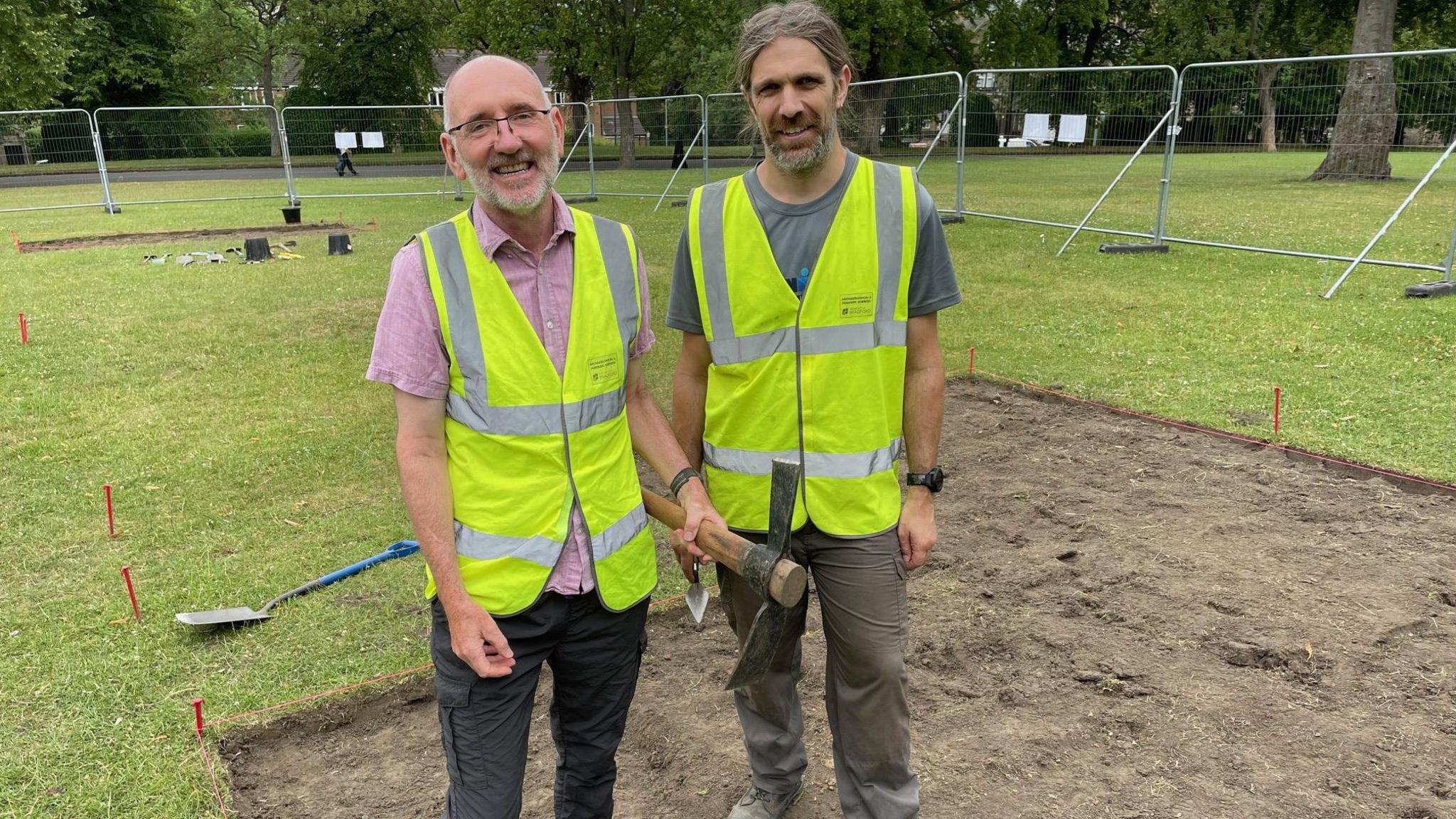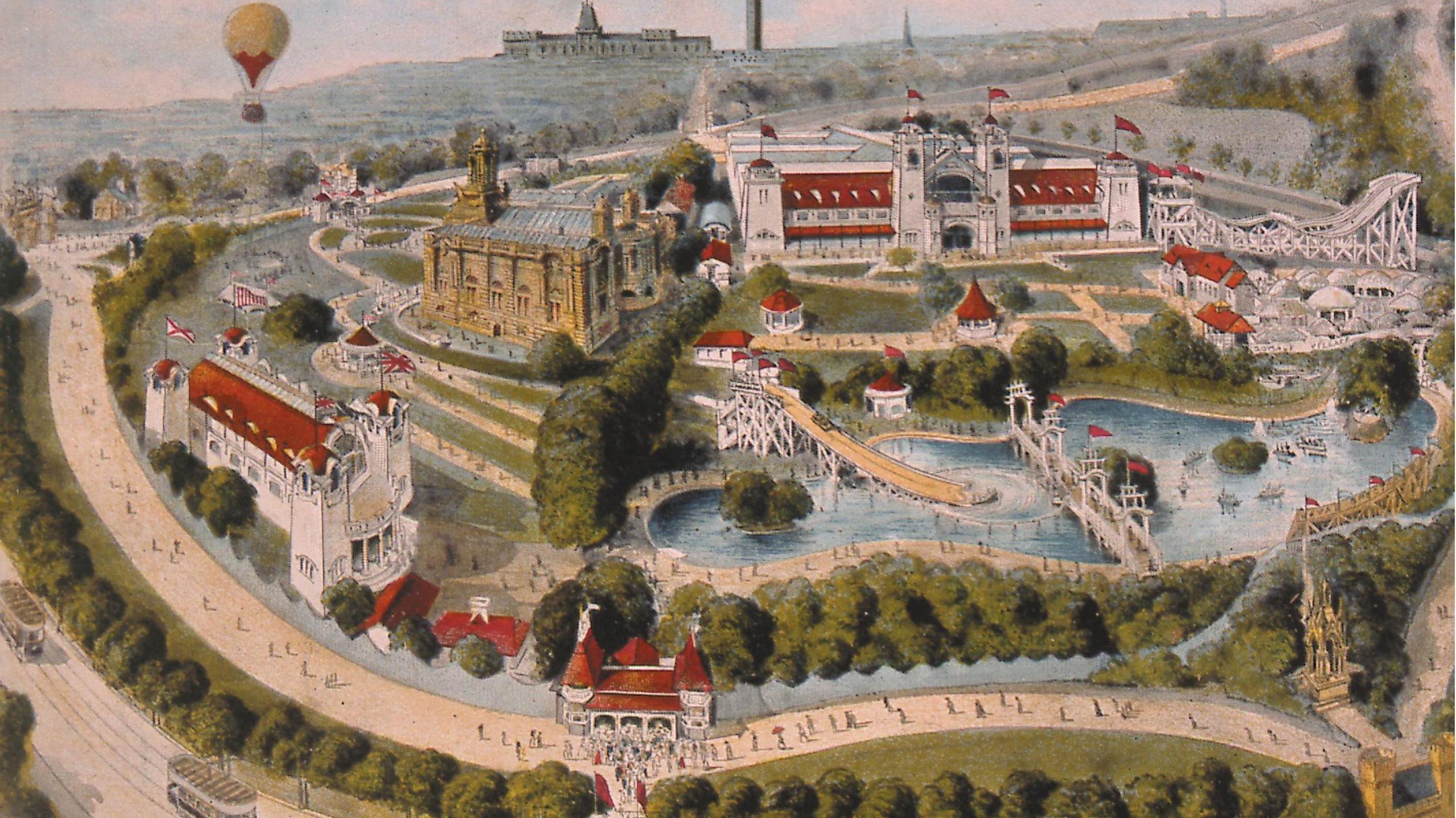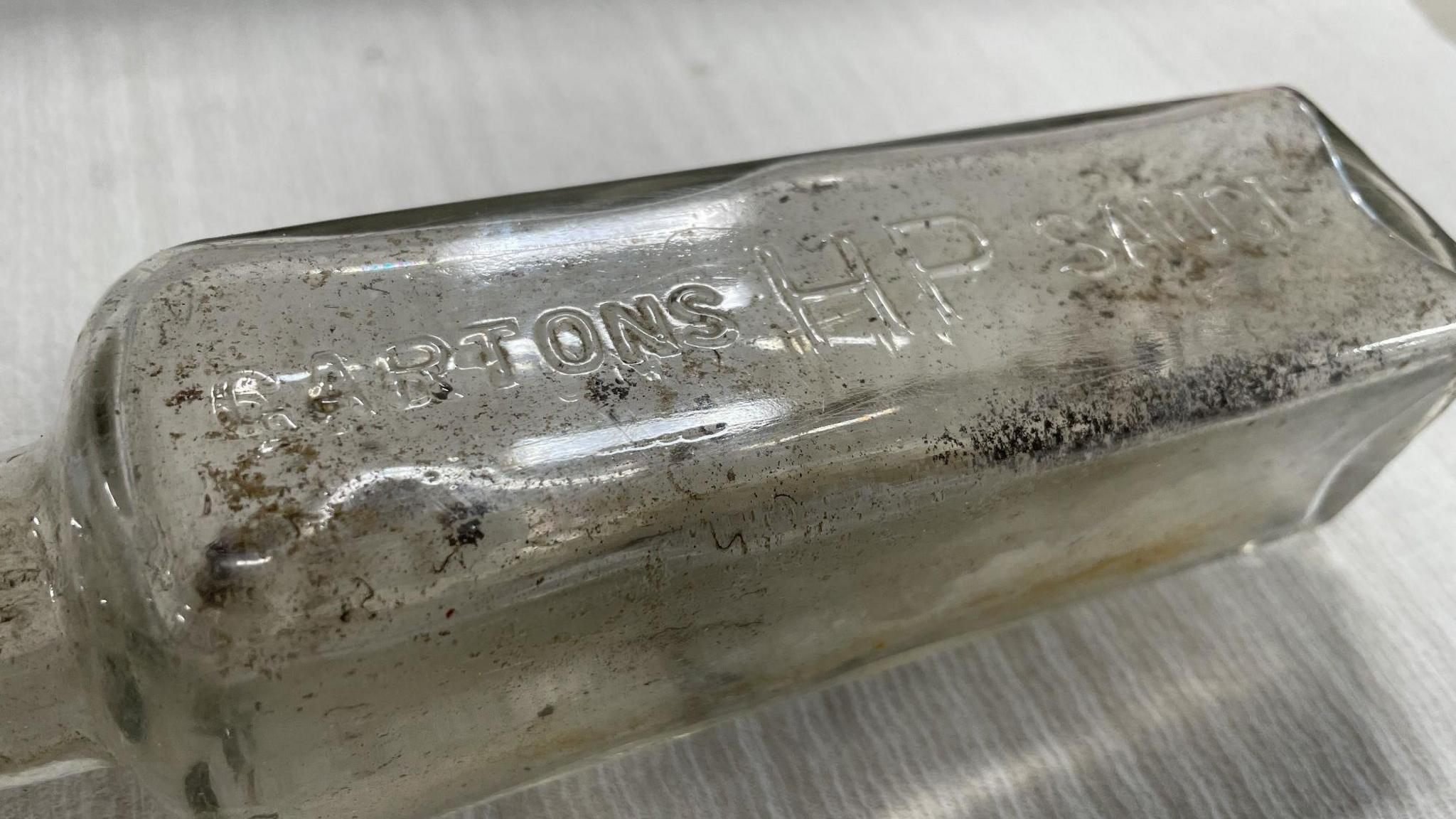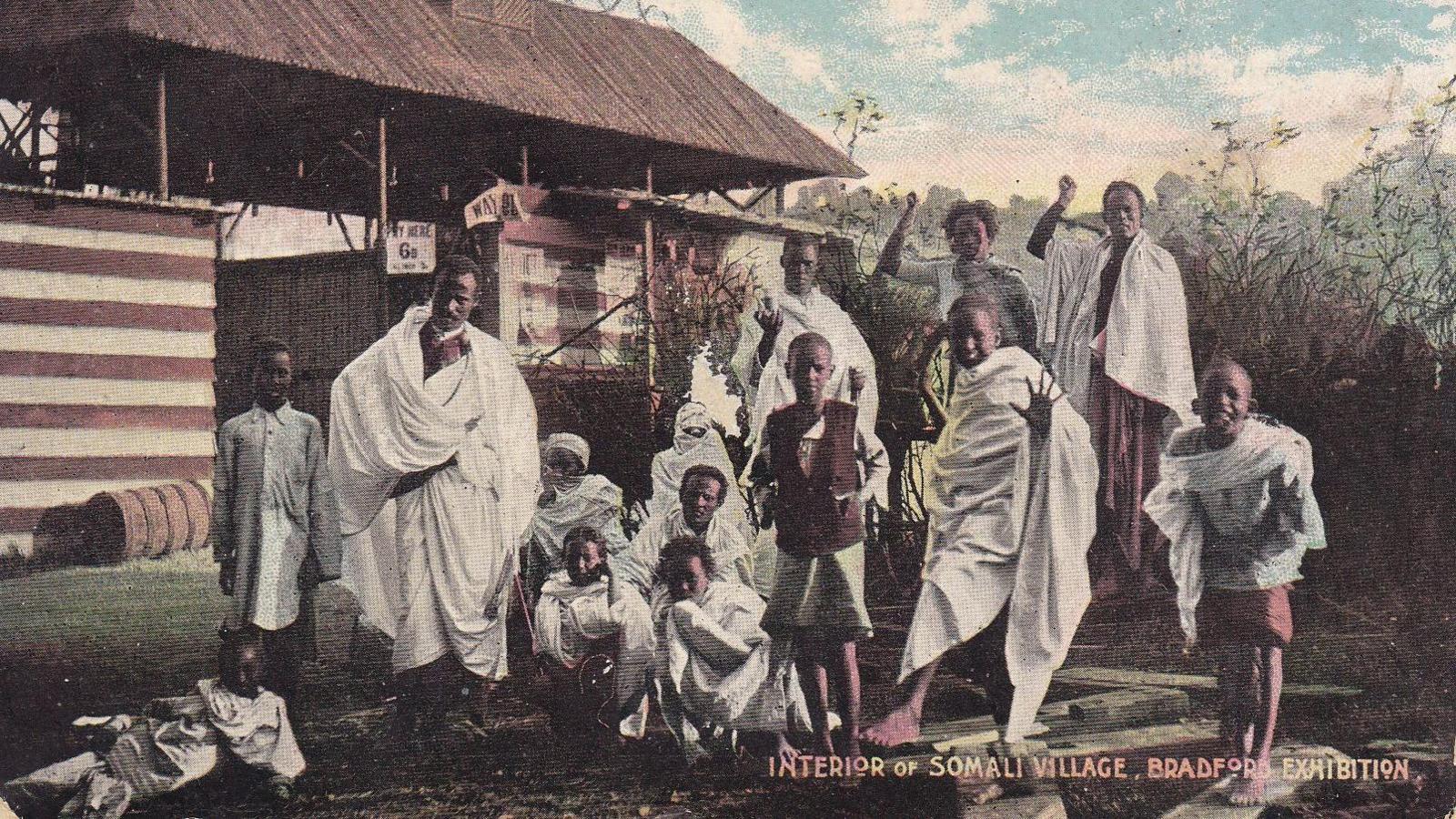'Lost treasures' of 1904 exhibition found in park

Prof Chris Gaffney and Dr Ben Jennings from the University of Bradford have been leading the archaeological dig at Lister Park
- Published
In 1904, more than two million people attended an event in a Bradford park that showcased the might of what had become an industrial powerhouse.
The City of Bradford Exhibition, held in Lister Park to mark the opening of Cartwright Hall within its grounds, drew huge crowds and had installations that were vast in scale - yet has been almost lost to history.
Now, a team of University of Bradford archaeologists have been excavating the exhibition site and have uncovered the foundations of the temporary concert hall and a recreation of an African village.
Prof Chris Gaffney said the dig was helping to rediscover "a lost period in the history of the city of Bradford".

A postcard featuring the 1904 'Great Exhibition' in Bradford's Lister Park
The exhibition ran from May until October that year, and celebrated industry through displays such as a gravity railway and a water chute on the park's lake.
These events were popular in the Victorian and Edwardian eras, the most famous being the Great Exhibition in London in 1851. The "world fairs" showcased industrial and cultural achievements, and often had a colonial focus.
Bradford's had a Somali village, in which 57 people were transported from the Horn of Africa to live and work in Lister Park. The group built their own huts and demonstrated dancing, spear-throwing and archery to visitors.
One of the objects uncovered by the excavation team was a glass bottle of Garton's HP brown sauce that pre-dates the exhibition. Found near the Somali village's location behind Cartwright Hall, Prof Gaffney said it provided a "time marker" for the fair.
"One of the things that we're learning is that people care about this particular festival, even though they don't know very much about it.
"But they're intrigued to find out why people from east Africa were living in the park, and what elements were left there."
Glassware, ceramics and remnants from the construction of the concert hall have also been recovered.
Prof Gaffney explained that the Somali villagers were paid for their appearance at the exhibition but that their role would be viewed differently through a modern lens.
"People were contracted and paid to be in the Somali village and you had to pay extra to see them.
"There's a lot of agency in there, and I think although we do have to view it in terms of this colonial view, it is by uncovering more of the evidence that we'll be able to understand more about this story."

A brown sauce bottle, dating from before 1903, has helped historians recreate the "footprint" of the exhibition
After the exhibition closed, the structures, including the concert hall, were dismantled and sold, and much of the event's legacy faded from public memory.
As the excavation continues, archaeologists are optimistic that further discoveries will shed more light on this "fascinating" and "amazing" chapter of Bradford's industrial and cultural history.
Prof Gaffney added: "We didn't really have anything apart from just one or two archives.
"Now, we are able to consider a larger research strategy for investigating the exhibition as a whole, but also there's the possibility of talking to the museums and art galleries in Bradford to try and work out how the story can also be told in terms of Cartwright Hall and its beginnings in Bradford."

Some of the Somali villagers who were part of the installation at the Bradford Exhibition
The findings from the dig are part of the University of Bradford's broader efforts to celebrate heritage as part of the Bradford 2025 City of Culture year.
The project, titled Uncovering the Bradford 1904 Exhibition, is also a collaboration with Prof Fozia Bora from the University of Leeds and the Somali Village charity. Together, they are working to digitise and preserve materials related to the 1904 exhibition, including photographs, postcards, and other memorabilia.
It is hoped the work will ultimately help create digital reconstructions of the exhibition's key features, allowing the public to experience the event in a new way.
Get in touch
Tell us which stories we should cover in Yorkshire
Listen to highlights from West Yorkshire on BBC Sounds, catch up with the latest episode of Look North.
Related topics
- Published8 June
